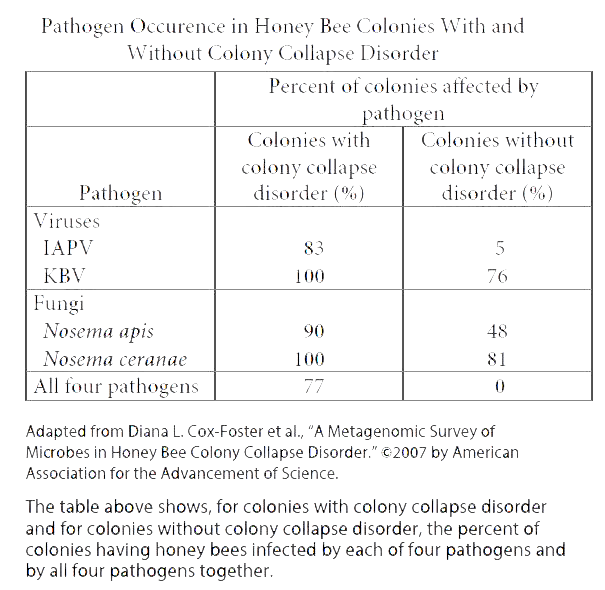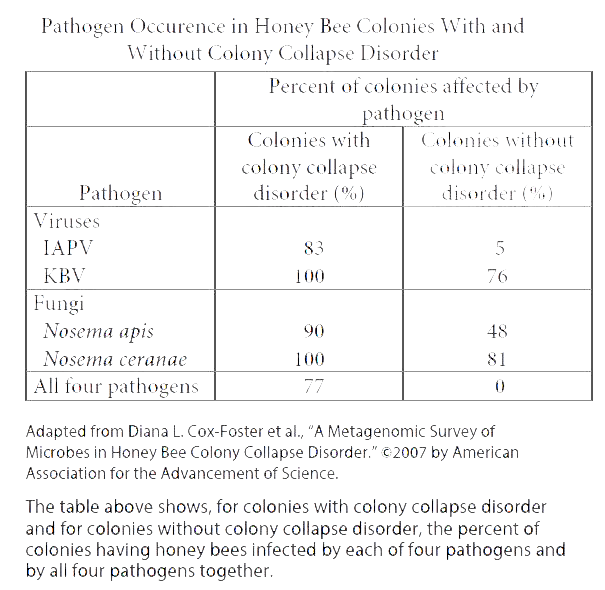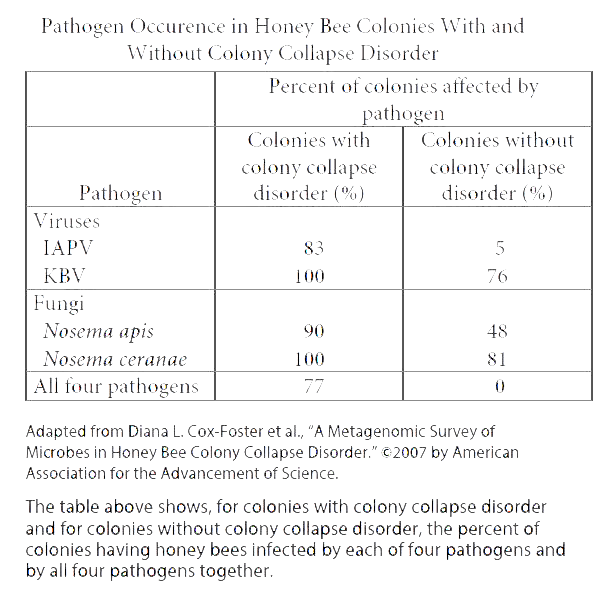A particular species of plant produces light, non-sticky pollen in large numbers and its stigmas are long and feathery. These modifications facilitate pollination by
insects
water
wind
animals
The correct Answer is:C
To solve the question regarding the modifications of a particular species of plant that produces light, non-sticky pollen in large numbers and has long, feathery stigmas, we can follow these steps:
1. Understanding Pollination:
- Pollination is the process of transferring pollen grains from the anther (male part) of a flower to the stigma (female part) of a flower. This is essential for fertilization and reproduction in flowering plants.
2. Identifying the Characteristics:
- The plant in question produces light, non-sticky pollen in large quantities.
- The stigmas of this plant are described as long and feathery.
3. Analyzing the Characteristics:
- Light, non-sticky pollen: This characteristic suggests that the pollen is adapted for being carried by the wind. Sticky pollen would adhere to surfaces and not travel far, while light pollen can be easily dispersed over long distances.
- Large quantities of pollen: Producing pollen in large numbers increases the chances of successful pollination, as not all pollen will reach a stigma.
- Long, feathery stigmas: These structures can catch and hold pollen grains more effectively as they are carried by the wind, increasing the likelihood of successful fertilization.
4. Determining the Pollination Mechanism:
- Based on the characteristics observed, it is evident that these adaptations are specifically suited for wind pollination (anemophily).
- In wind-pollinated plants, the pollen is often lightweight and produced in large quantities to ensure that some grains reach the stigmas of other flowers.
5. Conclusion:
- Therefore, the modifications of producing light, non-sticky pollen in large numbers and having long, feathery stigmas facilitate pollination by wind.
Final Answer:
These modifications facilitate pollination by wind.
- Pollination is the process of transferring pollen grains from the anther (male part) of a flower to the stigma (female part) of a flower. This is essential for fertilization and reproduction in flowering plants.
- The plant in question produces light, non-sticky pollen in large quantities.
- The stigmas of this plant are described as long and feathery.
- Light, non-sticky pollen: This characteristic suggests that the pollen is adapted for being carried by the wind. Sticky pollen would adhere to surfaces and not travel far, while light pollen can be easily dispersed over long distances.
- Large quantities of pollen: Producing pollen in large numbers increases the chances of successful pollination, as not all pollen will reach a stigma.
- Long, feathery stigmas: These structures can catch and hold pollen grains more effectively as they are carried by the wind, increasing the likelihood of successful fertilization.
- Based on the characteristics observed, it is evident that these adaptations are specifically suited for wind pollination (anemophily).
- In wind-pollinated plants, the pollen is often lightweight and produced in large quantities to ensure that some grains reach the stigmas of other flowers.
- Therefore, the modifications of producing light, non-sticky pollen in large numbers and having long, feathery stigmas facilitate pollination by wind.
These modifications facilitate pollination by wind.
Topper's Solved these Questions
- BOOK - NCERT EXEMPLAR ENGLISHCHAPTER - SEXUAL REPRODUCTION IN FIOWERING PIANTSEXERCISE - Very Short Answer Type Questions18videos
SEXUAL REPRODUCTION IN FIOWERING PIANTS
- BOOK - NCERT EXEMPLAR ENGLISHCHAPTER - SEXUAL REPRODUCTION IN FIOWERING PIANTSEXERCISE - Short Answer Type Questions10videos
SEXUAL REPRODUCTION IN FIOWERING PIANTS
- BOOK - NCERT EXEMPLAR ENGLISHCHAPTER - REPRODUCTIVE HEALTH EXERCISE - LONG ANSWER TYPE QUESTIONS5videos
REPRODUCTIVE HEALTH
- BOOK - NCERT EXEMPLAR ENGLISHCHAPTER - STRATEGIES FOR ENHANCMENT IN FOOD PRODUCTIONEXERCISE - Long Answer type Questions8videos
STRATEGIES FOR ENHANCMENT IN FOOD PRODUCTION
Similar Questions
Read the given features of a plant A a.Non sticky pollen grains Well exposed stamens Nectar absent Flowers are packed into inflorescence On the basis of above features identify the type of pollinating agent preffered by the plant A for pollination
View SolutionWhich of the following features is/are common to both wind and water pollinated flowers I. Pollen grains are long and ribbon-like, II. Stigma is large and feathery, III. Flowers are not colourful, IV. Flowers do not produce nectar
View Solution
Knowledge Check
- Question 1 - Select One
Refer to the given characteristics of some flowers.
(i) LIght and non-sticky pollen grains
(ii) Exserted stigmas and anthers
(iii) Large, often feathery stigmas
(iv) Flowers colourless, odourless and nectarless
(v) Common in grasses
Above features are the characteristics ofAanempohilyBhydrophilyCentomophilyDzoophily - Question 2 - Select One
Honey bees are hosts to the pathogenic large ectoparasitic mite Varroa destructor (Varroa mites). These mites feed on bee hemolymph (blood) and can kill bees directly or by increasing their susceptibility
line 5- to secondary infection with fungi, bacteria or viruses. Little is known about the natural defenses that keepthe mite infections under control. Pyrethrums are a group of flowering plants which include Chrysanthemum coccineum, Chrysanthemum
line 10- cinerariifolium, Chrysanthemum marschalli, and related species. These plants produce potent insecticides with anti-mite activity. The naturally occurring insecticides are known as pyrethrums. A synonym for the naturally occurring pyrethrums is
line 15- pyrethrin and synthetic analogues of pyrethrums are known as pyrethroids. In fact, the human mite infestation known as scabies (Sarcoptes scabiei) is treated with a topical pyrethrum cream. We suspect that the bees of commercial bee
line 20- colonies which are fed mono-crops are nutritionally deficient. In particular, we postulate that the problem is a diet deficient in anti-mite toxins: pyrethrums, and possibly other nutrients which are inherent in such plants. without, at least, intermittent feeding on
line 25- the pyrethrum producing plants, bee colonies are susceptible to mite infestations which can become fatal either directly or due to a secondary infection of immunocompromised or nutritionally deficient bees. This secondary infection can be viral, bacterial or
line 30- fungal and may be due to one or more pathogens. In addition, immunocompromised or nutritionally deficient bees may be further weakened when commercially produced insecticides are introduced into their hives by bee keepers in an effort to fight
line 35- mite infestation. We further postulate that the proper dosage necessary to prevent mite infestation may be better left to the bees, who may seek out or avoid pyrethrum containing plants depending on the amount necessary to defend against mites and the
line 40- amount already consumed by the bees, which in higher doses could be potentially toxic to them. This hypothesis can best be tested by a trial wherein a small number of commercial honey bee colonies are offered a number of pyrethrum
line 45- producing plants, as well as a typical bee food source such as clover, while controls are offered only the clover. Mites could then be introduced to each hive with note made as to the choice of the bees, and the effects of the mite parasites on the experimental
line 50 - colonies versus control colonies. It might be beneficial to test wild-type honey bee colonies in this manner as well, in case there could be some genetic difference between them that affects the bees’ preferences for pyrethrum producing flowers.
##COL_BOD_SAT_PT_03_E01_043_Q01.png" width="80%">
In line 42, the authors state that a certain hypothesis “can best be tested by a trial.” Based on the passage, which of the following is a hypothesis the authors suggest be tested in a trial?AHoneybees that are exposed to both pyrethrums and mites are likely to develop a secondary infection by a virus, a bacterium, or a fungus.BBeekeepers who feed their honeybee colonies a diet of a single crop need to increase the use of insecticides to prevent mite infestations.CA honeybee diet that includes pyrethrums results in honeybee colonies that are more resistant to mite infestations.DHumans are more susceptible to varroa mites as a result of consuming nutritionally deficient food crops. - Question 3 - Select One
Honey bees are hosts to the pathogenic large ectoparasitic mite Varroa destructor (Varroa mites). These mites feed on bee hemolymph (blood) and can kill bees directly or by increasing their susceptibility
line 5- to secondary infection with fungi, bacteria or viruses. Little is known about the natural defenses that keepthe mite infections under control. Pyrethrums are a group of flowering plants which include Chrysanthemum coccineum, Chrysanthemum
line 10- cinerariifolium, Chrysanthemum marschalli, and related species. These plants produce potent insecticides with anti-mite activity. The naturally occurring insecticides are known as pyrethrums. A synonym for the naturally occurring pyrethrums is
line 15- pyrethrin and synthetic analogues of pyrethrums are known as pyrethroids. In fact, the human mite infestation known as scabies (Sarcoptes scabiei) is treated with a topical pyrethrum cream. We suspect that the bees of commercial bee
line 20- colonies which are fed mono-crops are nutritionally deficient. In particular, we postulate that the problem is a diet deficient in anti-mite toxins: pyrethrums, and possibly other nutrients which are inherent in such plants. without, at least, intermittent feeding on
line 25- the pyrethrum producing plants, bee colonies are susceptible to mite infestations which can become fatal either directly or due to a secondary infection of immunocompromised or nutritionally deficient bees. This secondary infection can be viral, bacterial or
line 30- fungal and may be due to one or more pathogens. In addition, immunocompromised or nutritionally deficient bees may be further weakened when commercially produced insecticides are introduced into their hives by bee keepers in an effort to fight
line 35- mite infestation. We further postulate that the proper dosage necessary to prevent mite infestation may be better left to the bees, who may seek out or avoid pyrethrum containing plants depending on the amount necessary to defend against mites and the
line 40- amount already consumed by the bees, which in higher doses could be potentially toxic to them. This hypothesis can best be tested by a trial wherein a small number of commercial honey bee colonies are offered a number of pyrethrum
line 45- producing plants, as well as a typical bee food source such as clover, while controls are offered only the clover. Mites could then be introduced to each hive with note made as to the choice of the bees, and the effects of the mite parasites on the experimental
line 50 - colonies versus control colonies. It might be beneficial to test wild-type honey bee colonies in this manner as well, in case there could be some genetic difference between them that affects the bees’ preferences for pyrethrum producing flowers.

The passage most strongly suggests that beekeepers’ attempts to fight mite infestations with commercially produced insecticides have what unintentional effect?AThey increase certain mite populations.BThey kill some beneficial forms of bacteriaCThey destroy bees’ primary food source.DThey further harm the health of some bees.
State True of False
(i) Light nd non sticky pollen grains are characteristic of wind pollinated floweres
(ii) Dioecious conditin in plants prevents xenogamyView SolutionRead the following statements and find out the incorrect statements.
a. In majority of organisms, male gamete is motile and female gamete is non-motile (stationary).
b. In algae and fungi, both male and female gametes are non-motile.
c. In seed plants, pollen grains are the carrier of male gametes and ovule has the egg.
d. In dioecious plants, pollination facilitates trasnfer of pollen grains to the stigma.
e. In monoecious animals, since male and female gametes are formed in different individuals, the organism must evolve special mechanism for gamete transfer.View SolutionIn which of the following , kind of pollination the following shows the following characteristic ?
1. Stigma is long and feathery .
2. The pollens are dry unwettable.
3. Flower are colourless and odourless.View SolutionHoney bees are hosts to the pathogenic large ectoparasitic mite Varroa destructor (Varroa mites). These mites feed on bee hemolymph (blood) and can kill bees directly or by increasing their susceptibility
line 5- to secondary infection with fungi, bacteria or viruses. Little is known about the natural defenses that keepthe mite infections under control. Pyrethrums are a group of flowering plants which include Chrysanthemum coccineum, Chrysanthemum
line 10- cinerariifolium, Chrysanthemum marschalli, and related species. These plants produce potent insecticides with anti-mite activity. The naturally occurring insecticides are known as pyrethrums. A synonym for the naturally occurring pyrethrums is
line 15- pyrethrin and synthetic analogues of pyrethrums are known as pyrethroids. In fact, the human mite infestation known as scabies (Sarcoptes scabiei) is treated with a topical pyrethrum cream. We suspect that the bees of commercial bee
line 20- colonies which are fed mono-crops are nutritionally deficient. In particular, we postulate that the problem is a diet deficient in anti-mite toxins: pyrethrums, and possibly other nutrients which are inherent in such plants. without, at least, intermittent feeding on
line 25- the pyrethrum producing plants, bee colonies are susceptible to mite infestations which can become fatal either directly or due to a secondary infection of immunocompromised or nutritionally deficient bees. This secondary infection can be viral, bacterial or
line 30- fungal and may be due to one or more pathogens. In addition, immunocompromised or nutritionally deficient bees may be further weakened when commercially produced insecticides are introduced into their hives by bee keepers in an effort to fight
line 35- mite infestation. We further postulate that the proper dosage necessary to prevent mite infestation may be better left to the bees, who may seek out or avoid pyrethrum containing plants depending on the amount necessary to defend against mites and the
line 40- amount already consumed by the bees, which in higher doses could be potentially toxic to them. This hypothesis can best be tested by a trial wherein a small number of commercial honey bee colonies are offered a number of pyrethrum
line 45- producing plants, as well as a typical bee food source such as clover, while controls are offered only the clover. Mites could then be introduced to each hive with note made as to the choice of the bees, and the effects of the mite parasites on the experimental
line 50 - colonies versus control colonies. It might be beneficial to test wild-type honey bee colonies in this manner as well, in case there could be some genetic difference between them that affects the bees’ preferences for pyrethrum producing flowers.

As used in line 35, “postulate” most nearly means toView SolutionHoney bees are hosts to the pathogenic large ectoparasitic mite Varroa destructor (Varroa mites). These mites feed on bee hemolymph (blood) and can kill bees directly or by increasing their susceptibility
line 5- to secondary infection with fungi, bacteria or viruses. Little is known about the natural defenses that keepthe mite infections under control. Pyrethrums are a group of flowering plants which include Chrysanthemum coccineum, Chrysanthemum
line 10- cinerariifolium, Chrysanthemum marschalli, and related species. These plants produce potent insecticides with anti-mite activity. The naturally occurring insecticides are known as pyrethrums. A synonym for the naturally occurring pyrethrums is
line 15- pyrethrin and synthetic analogues of pyrethrums are known as pyrethroids. In fact, the human mite infestation known as scabies (Sarcoptes scabiei) is treated with a topical pyrethrum cream. We suspect that the bees of commercial bee
line 20- colonies which are fed mono-crops are nutritionally deficient. In particular, we postulate that the problem is a diet deficient in anti-mite toxins: pyrethrums, and possibly other nutrients which are inherent in such plants. without, at least, intermittent feeding on
line 25- the pyrethrum producing plants, bee colonies are susceptible to mite infestations which can become fatal either directly or due to a secondary infection of immunocompromised or nutritionally deficient bees. This secondary infection can be viral, bacterial or
line 30- fungal and may be due to one or more pathogens. In addition, immunocompromised or nutritionally deficient bees may be further weakened when commercially produced insecticides are introduced into their hives by bee keepers in an effort to fight
line 35- mite infestation. We further postulate that the proper dosage necessary to prevent mite infestation may be better left to the bees, who may seek out or avoid pyrethrum containing plants depending on the amount necessary to defend against mites and the
line 40- amount already consumed by the bees, which in higher doses could be potentially toxic to them. This hypothesis can best be tested by a trial wherein a small number of commercial honey bee colonies are offered a number of pyrethrum
line 45- producing plants, as well as a typical bee food source such as clover, while controls are offered only the clover. Mites could then be introduced to each hive with note made as to the choice of the bees, and the effects of the mite parasites on the experimental
line 50 - colonies versus control colonies. It might be beneficial to test wild-type honey bee colonies in this manner as well, in case there could be some genetic difference between them that affects the bees’ preferences for pyrethrum producing flowers.

Which choice provides the best evidence for the answer to the previous question?View Solution

